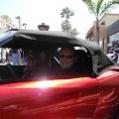Before signing below all items above must be marked “pass” indicating the items are in a safe operating condition.
N/A may apply to air bags, mudguards, reflectors and safety belts/shoulder harness only if the item was not original equipment.
N/A may apply to glass and windshield if not present; if present it must be proper safety glass.
Windshield ---> Pass, Fail, or N/A
Side Glass ---> Pass, Fail, or N/A
Rear Glass ---> Pass, Fail, or N/A
Mirrors ---> Pass or Fail
Steering ---> Pass or Fail
Air Bags ---> Pass, Fail, or N/A
Frame ---> Pass or Fail
Headlights ---> Pass or Fail
Taillights ---> Pass or Fail
Turn Signals ---> Pass or Fail
Parking Lights ---> Pass or Fail
Brake Lights ---> Pass or Fail
Brakes ---> Pass or Fail
Horn ---> Pass or Fail
Muffler ---> Pass or Fail
Mudguards (over 26,000 lbs) ---> Pass, Fail, or N/A
Windshield Wipers ---> Pass or Fail
Emergency Brake ---> Pass or Fail
Safety Belts, Shoulder Harness ---> Pass, Fail, or N/A




 Thanks:
Thanks:  Likes:
Likes: 



 Reply With Quote
Reply With Quote
 n
n

 . Ironic that CA is such a pain in other respects, but this is such a gift to kit car builders.
. Ironic that CA is such a pain in other respects, but this is such a gift to kit car builders.